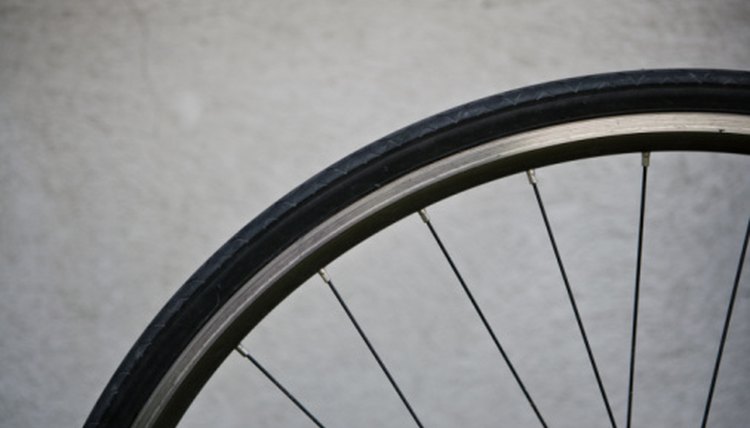The Best Bicycle Tire Liners

Bad weather, rude drivers, excess traffic and road debris can all detract from your ride, but few other circumstances squeeze the joy out of your cruise more than a flat tire. If you’re prone to flats, then you seriously need to review your cycle and your bicycling habits to identify strategies to reduce your risk of flats. One strategy oft employed by cyclers is to install a tire liner to help protect against road hazards. Various options are available, each with pros and cons, so consider your options before plopping down your hard earned cash.
Rim Liners
A rim liner is a thin strip of some material, usually extruded polyuerethane plastic, that wraps around the inside of the rim to protect the bottom of the inner tube from abrasion and damage from the ends of the spokes, which enter the rim and create small ridges. The rim liner does not require great tensile strength or need to be made of a particularly tough puncture-resistant material. The rim liner that came with your wheel or any off-the-shelf replacement will suffice. Make sure that the rim liner is aligned properly, has no kinks, and does not overlap with itself where the two ends meet as the friction can damage the tube or cause pinch fats.
Anti-Puncture Liners
Anti-puncture liners protect the top of the tube; the part that is exposed to tiny slivers of flints, nails, and thorns that pierce the tire. Liners can be purchased online, at bike stores and at some department stores in the bicycle section. These liners are placed on the inside of the tires to form a protective layer between the tire and the inner tube. They can provide some protection against small or thin objects but will not prevent a nail or large shard of glass from getting through to your tube.
Low End Liners
The most widely used tire liners are made of polyurethane plastic. They come in a roll large enough to protect two tires. They do not have a peel and stick feature, so it can be tricky to align them properly on the inside of the tire. Improper alignments, including kinks or wrinkles, overlapping butts or straying off the center of the crown can cause pinching and tire wear. These are relatively inexpensive and add minimal weight.
Kevlar Tire Liners
If you ride through areas that are littered with glass or thorns you may want to invest a bit more and get Kevlar tire liners. Though heavier and more expensive, Kevlar is tougher and more resistant to punctures. Kevlar is the stuff they use to make bullet-proof vests. Puncture resistant Kevlar tape has a peel and stick application to assist with proper alignment, adds only 20 g or so per tire, and the Kevlar composition gives you bullet-proof protection. Unfortunately, even with the tight weave of the liner, tiny nails or thorns can still find their way through to your tube, so don’t expect that your tube will become invulnerable just because you’ve installed a liner.
Avoid Bulges
Think about it. Bulges are rarely a good thing. Flat tires, fat bellies and hernias are the stuff of bulges. So unless you have a wallet bulging with money, avoid bulges, including bulges in your tire liner. Liners that have an adhesive strip are more easily placed wrinkle free along the crown of the tire, where it will do the most good. Also, you can get a bulge where the two ends of the liner overlap. Snip off one end of the liner so the two ends snug firmly against each other but don’t overlap.
References
Writer Bio
Jon Williams is a clinical psychologist and freelance writer. He has performed, presented and published research on a variety of psychological and physical health issues.
